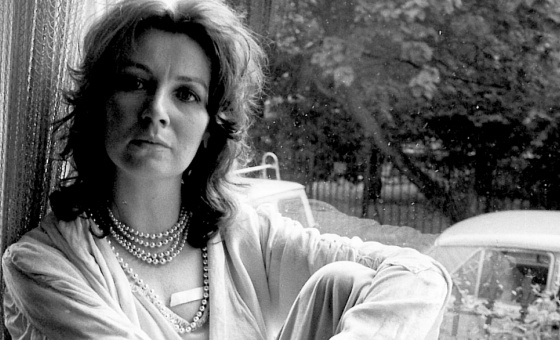This is the last article you can read this month
You can read more article this month
You can read more articles this month
Sorry your limit is up for this month
Reset on:
Please help support the Morning Star by subscribing here
These are unknown times for West Ham United. The club have said goodbye to the Boleyn Ground as well as Tony Carr.
A home and the man who came to symbolise their values and identity, gone in a season.
The past left behind and the future, exactly what it is, left unclear.
Problems for the Hammers at the start of the season have been defined by the changes off the pitch and decided by issues on it. Crowd troubles, flat atmospheres and poor results have meant that this isn’t the new era they wanted.
It was never going to be easy; leaving a home never is. The history and memories tied to the place vanish and creating new ones complicated by the longing to just go back to how it was — just ask Arsenal.
But for West Ham, as much as their identity has been defined by a raucous Upton Park, usually under the East End floodlights, and an expression of faith and commitment to attractive football — the greatest element of the foundation of their identity and values has always been the local talent. It so happens that this is also under threat.
The 1966 World Cup winning England side had the club legend Bobby Moore, as well as Geoff Hurst and Martin Peters, all playing vital parts in England’s triumph, so much so that West Ham fans like to claim it as their success.
And since the ’90s, they’ve almost fed the English squad. The list of names is impressive: Frank Lampard, Joe Cole, Michael Carrick, Jermain Defoe, Rio Ferdinand and Glen Johnson as well as others. Between 2000 and 2011, West Ham produced eight players who played for England.
The sense has always been, particularly under Alan Pardew and Alan Curbishley, that local talent was at the heart of West Ham’s steady progress.
More recently the likes of Mark Noble, James Tomkins and Jack Collison came along although only Noble remains between them. Others like Junior Stanislas also featured. For the supporters there was a sense of pride in this. The best of East London against the rest of the country so often.
That tradition has been strained recently though; the reservoir of local talent hasn’t dried up but opportunities are harder to come by.
These days West Ham have players like Dimitri Payet and Manuel Lanzini among others and the ambition at the club has grown.
Long-term investment in youth talent has often appeared like a gamble for a club chasing European places. The scar of relegation from 2011 has only deepened that pragmatic sense for survival and hunger to keep climbing.
The only clear emerging talent so far has really been Reece Oxford, who has found playing time hard to come by since excelling in his debut last season, shutting out Mesut Ozil and the rest of the Arsenal starting XI.
Academy product James Tomkins has gone south of the river to Crystal Palace. A lot of their promising youngsters are out on loan.
The policy hasn’t been to bring through talent but instead sign players who had experience in Premier League.
Yet experience doesn’t always translate to talent: Harry Redknapp’s West Ham side were often young but brimming with talent.
The better moments of Alan Curbishley and Giofranco Zola’s reigns were defined by a commitment to the use of the locals.
The likes of Noble and Tomkins became established stars, Collison was a promising player before injury changed his career and life while others like Stanislas, Zavon Hines and Fred Sears emerged.
Yet the policy seemed to shift particularly under Sam Allardyce. The latter was always seen as an individual who counteracted the “West Ham way” rather than complementing it but it wasn’t just for the desperately dour football.
The likes of Kevin Nolan, Andy Carroll, Abdullah Faye, Guy Demel, James O’Brien and Stewart Downing were signed yet none of these players particularly excelled.
Was Carroll, at a club record of £15 million and a history of injuries, genuinely a safer option than searching in-house?
Barring Payet and Lanzini, have West Ham signed a winger in recent years who could justify the loss of faith in Stanislas?
The criticism of this current reality would be met with a counterpoint that those romanticising West Ham’s Academy of Football are blind to it.
West Ham’s season is defined by whether they avoid the drop or not and risks that might be wise investments in the future could seem dangerous today.
And yet, West Ham’s academy has proven to be a reliable supplier of talent in the past, distant and recent. Southampton have pushed youngsters into their team and benefited from it. There was a time when West Ham prospered from it too.
Nor does pursuing youth development necessarily mean overlooking players like Payet but offering opportunities to promising players like Lewis Page and Kyle Knoyle rather than just shipping them out.
Currently West Ham risk appearing like Chelsea who haven’t successfully promoted a youngster since John Terry.
For all that the fans talk about the Boleyn Ground and the “West Ham way” the essence of what makes them who they are is a team that has players born and raised in local areas wearing the famous claret and blue.
A club that remembers its roots and recognises that the East End is never lacking in talent or enthusiasm for football.
From the ’60s through to the ’80s and ’90s, that was the actual West Ham way. It’s what made them who they are. But that part of their identity is now clearly fading.









